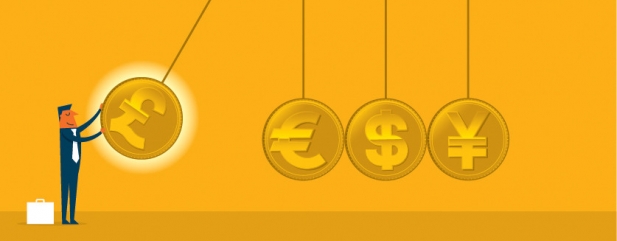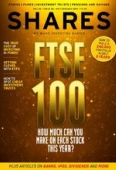Archived article
Please note that tax, investment, pension and ISA rules can change and the information and any views contained in this article may now be inaccurate.
The impact of the pound on your portfolio

One of the most striking aspects of 2016 was the impact of currency returns on investor portfolios. The sharp fall in the pound after the EU referendum meant that sterling finished the year down 16% against the dollar, 14% against the euro and 19% against the yen.
UK-based investors with exposure to overseas assets denominated in any of these currencies would have enjoyed a massive increase in their value once translated back into sterling. The movements were so extreme that they would have largely dominated the local market returns.
Paul Derrien, investment director at Canaccord Genuity Wealth Management, says retail investors must always be cognisant of potential fluctuations in currency and how that will affect the performance of any overseas-exposed funds or companies in which they are invested.
‘Far too often retail investors ignore these risks and are not fully aware what is driving the returns from their investments,’ he says.
‘This will be especially paramount in 2017 as we sign Article 50; watch the impact of European elections; and the likely increase in pressure on interest rates caused by higher inflation. All will have material effects on currencies throughout the year.’
HOW DO I KNOW IF A CURRENCY IS OVERVALUED OR UNDERVALUED?
There are various ways of trying to work out if a currency is overvalued or undervalued relative to another with one of the best known being the purchasing power parity (PPP) theory.
This states that the long-run equilibrium value of a currency is completely determined by the ratio of domestic prices relative to foreign prices.
Valentin Bissat, senior economist and strategist at Mirabaud Asset Management, says that in the short to medium term, arbitrage in tradeable goods is limited by tariffs, transaction costs, and entry and exit barriers, so there are persistent departures from PPP.
‘Investors should not use PPP to assess the risks of international investments due to the departure of FX rates from their fair value,’ he explains.
‘Instead they should use short and medium term indicators such as: monetary policies, real interest rate differentials based on the two-year government bond yields, investor positioning, current account trends and relative economic growth.’
Even if you have all of this data it can still be extremely difficult to work out the likely implications for your investments.
‘We can see from the way individual companies function, or how overseas funds are structured and are constantly changing their investments, that underlying currency exposure will be very difficult to calculate,’ explains Derrien at Canaccord.
‘That does not mean investors shouldn’t factor this into their analysis – in fact it is essential that they do, even if the calculations are more general.’
WHERE DO I GO FOR INFORMATION ON COMPARING CURRENCIES?
One practical solution would be to use the World Price Index, which is available online, to provide an indication as to which currencies look overvalued or undervalued.
Alternatively there is the Big Mac Index published by The Economist that offers a more intuitive version of PPP. This is a way to gauge whether foreign currencies are overvalued or undervalued by comparing the prices of McDonald’s Big Mac burgers around the world.
Adrian Lowcock, investment director at Architas, says the pound is currently one of the potentially riskier currencies as concerns over Brexit will make it more volatile and uncertain.
‘The trend for sterling is weakness as expectations of a hard Brexit rise and fall. This makes it very difficult to call exposure to other currencies as their performance might be more driven by UK events than domestic ones.
‘I would expect the pound to remain under pressure during the whole Brexit process and therefore it would be prudent for investors to have exposure to overseas currencies.’
WHAT’S THE OUTLOOK FOR THE DOLLAR, EURO AND YEN?
Lowcock thinks the US dollar will remain strong and continue to grow this year, whereas the euro could come under pressure as election fears rise, although it may well swing back if the results support the status quo.
‘In Japan a hedged currency fund can add value at the right times as when the currency falls the market tends to perform. The yen is weakening against the dollar, but less so against the pound. This is an area where hedging can pay off, although getting it wrong can have a significant impact on returns.’
CURRENCY HEDGED FUNDS
Some funds have hedged share classes that use derivatives to fully or partially eliminate the impact of the exchange rate movements on the value of the underlying investments.
Examples include: Schroder European Alpha Plus, JP Morgan Europe Dynamic ex UK, Schroder Tokyo, GLG Japan CoreAlpha and Lindsell Train Japanese Equity.
According to data from FE Trustnet, investors in the Lindsell Train Japanese Equity B Sterling Quoted (IE00B3MSSB95) share class would have made 32.9% over one year, 68.6% over three years and 101.5% over five years. Over the same timeframes the hedged share class returned 12.7%, 37.1% and 133.2%.
‘There is a cost to buying a derivative for hedging a currency, but it is usually not particularly significant (around a few basis points) compared to the effect it would have on performance,’ says Lowcock.
‘Get a currency call right and it can add significantly to returns, whilst getting it wrong would detract from performance, possibly wiping out gains on the underlying investment.’
There are also lots of currency hedged ETFs such as Lyxor Euro Stoxx 300 – GBP Hedged (MFEG). (NS)
Important information:
These articles are provided by Shares magazine which is published by AJ Bell Media, a part of AJ Bell. Shares is not written by AJ Bell.
Shares is provided for your general information and use and is not a personal recommendation to invest. It is not intended to be relied upon by you in making or not making any investment decisions. The investments referred to in these articles will not be suitable for all investors. If in doubt please seek appropriate independent financial advice.
Investors acting on the information in these articles do so at their own risk and AJ Bell Media and its staff do not accept liability for losses suffered by investors as a result of their investment decisions.

 magazine
magazine










